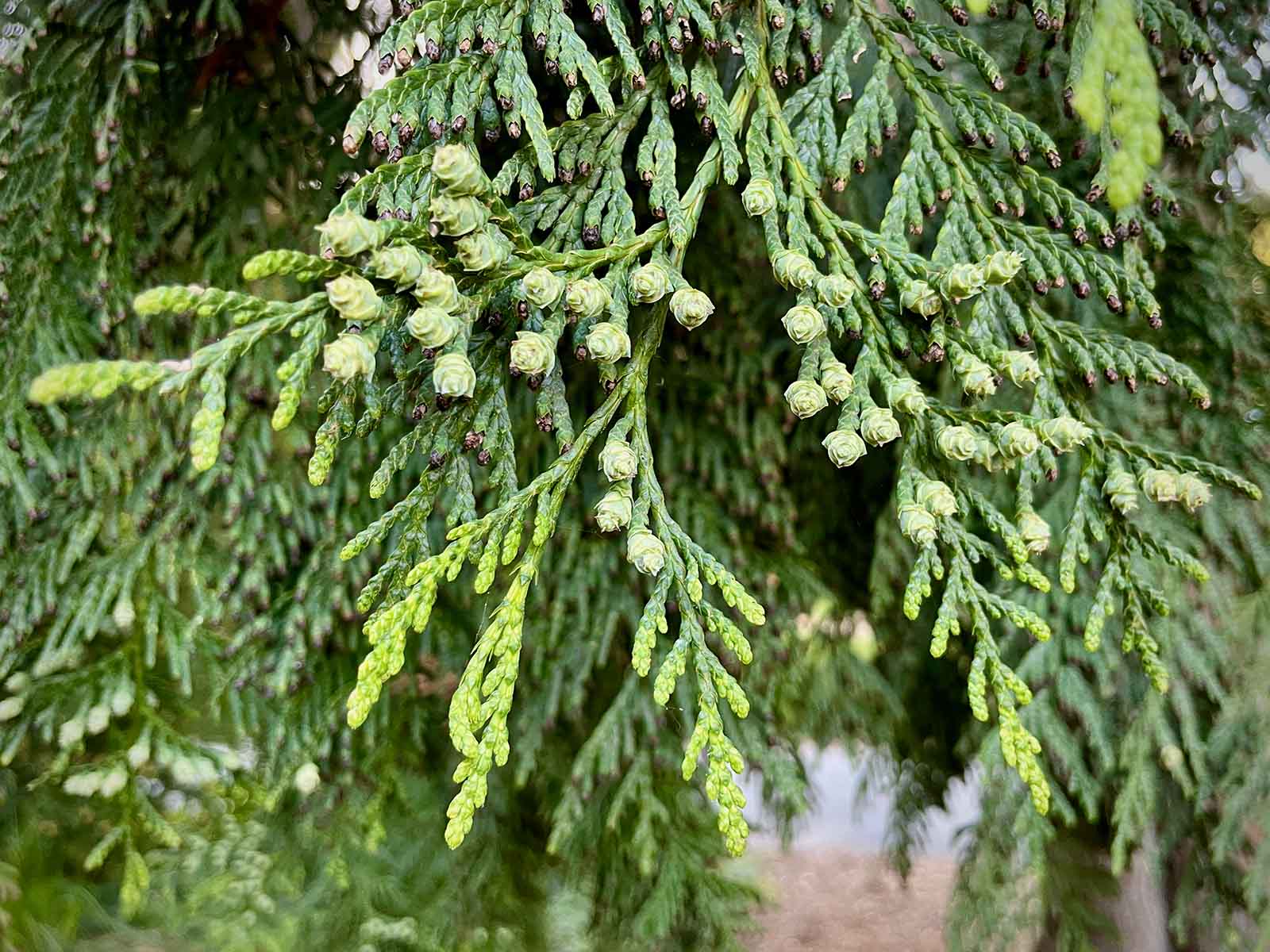Thuja plicata
 western red cedar
western red cedar

Western red cedar is the tree whose wood shelters those campus homeowners whose houses are shingled. The wood is red, soft, not very dense and rather brittle, but insects do not relish it and it does not rot readily. On the sunny side of the roof it slowly oxidizes into gray powder, taking 10 to 20 years to lose perhaps ⅛ inch of thickness, while shaded areas develop moss that fosters rot by retaining dust and rain. This wood is also used for the cedar-lined closets found in many old campus homes. The two-toned appearance arises because there is a rather sharp boundary between the pale sapwood and the red lignified heartwood. It is the heartwood that has the spicy aroma and flavor. The ⅛-inch scale-like leaves are in overlapping pairs, unlike the cypress, and the flat branchlets are arranged in glossy flat sprays, darker on the underside. The ripe cones are brown, about ½ inch long.
Western red cedar, which grows to 220 feet tall and over 10 feet in diameter, was the basis of a distinctive woodworking culture on the Pacific Coast from Northern California to lower Alaska involving dugout canoes up to 40 feet long and 6 feet broad, totem poles up to 60 feet tall, and houses up to 45 by 180 feet. One house 580 feet long was recorded. House construction was of planks of enormous dimensions. The technology for lumber production with stone age tools is not trivial. Mussel-shell adzes, antler wedges, and hammerstones constitute rather modest equipment for felling, splitting, and dressing forest giants. These days chain saws are allowed; see the totem pole in Dohrmann Grove near the Art Gallery and another at Canfield Court.
A large specimen, thinning at the top in recent years, can be seen at Kingscote Gardens, at the edge of the lawn next to the giant bunya bunya tree and the driveway. Another at 611 Alvarado Row had declined and was removed in 2022. In Palo Alto, a handsome specimen is just west of the Fire Station in Rinconada Park.
Illustrations: cone comparisons of Thuja species.
Name derivation: Thuja – Greek name thuia for a type of juniper; plicata – folded, like a fan.
About this Entry: The main text of this entry is from the book Trees of Stanford and Environs, by Ronald Bracewell, published 2005. All locations verified (Sep 2020, SP). Locations updated, added to (May 2024, SP).




